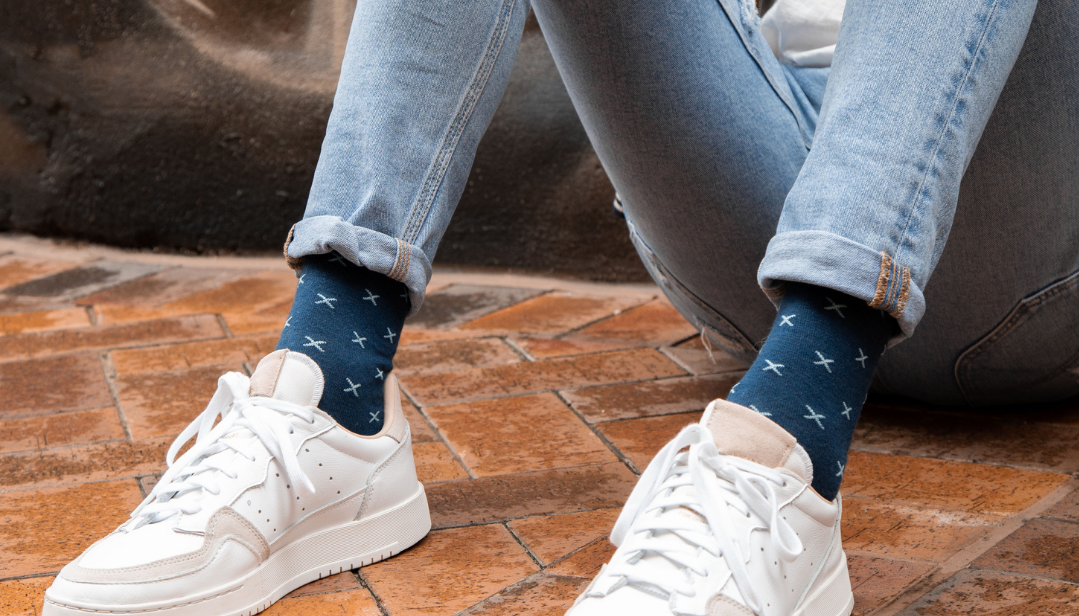In recent years, there has been a strong shift towards natural products for their health benefits. For example, we’re starting to see more and more people favour natural fibres like merino wool over their synthetic counterparts.
Table of contents
Socks are no different. Even though synthetic socks like polyester and nylon are easy and affordable to buy, they present significant disadvantages over merino wool socks. Unlike wool socks, they hold moisture, create odour, and promote fungus growth.
If you are experiencing any of these things or simply want to see whether purchasing merino wool or possum merino socks is worth the money, read about some of their benefits below.
Softness
The softness of merino wool and possum merino socks is undeniable. Compared to nylon, polyester, and even cotton socks, they lead the way regarding softness. This is because merino wool fibres, even compared to traditional wool, are thin, gentle, and soft.
However, this softness is paired with durability. They are made to last the distance, which can give you much-needed peace of mind when you spend a lot of time on your feet.
Lightweight
You might think that you need to wear thick, bulky socks to keep your feet warm, but that’s not always the case. Merino socks are ideal for year-round use but don’t have the bulk associated with other sock materials.
This means that you may be less likely to suffer from tightness in your shoes and blisters, which are common problems with thicker materials.
Odour Resistance
According to research, merino wool fibres are odour resistant. This means they don’t smell and don’t require washing as regularly as your socks featuring other materials.
Research into wool garments and textiles determined that wool fibres have unique properties. They can absorb much more water vapour than cotton and polyester while also preventing the build-up of unpleasant odours, bacteria, and sweat.
The fibres can also lock away these odours, which are then only released when you wash them. Anyone taking part in outdoor activities like working on a farm or hiking will likely see the value of merino wool socks before long.
Biodegradability & Sustainability
Most of us probably won’t spare much thought for what happens to our synthetic socks when we throw them away. They might have holes in them and are no longer fit for use, but that doesn’t mean they aren’t still your problem when they are put out for rubbish collection. Ultimately, they end up in landfills and even the ocean.
Synthetic fabrics, socks included, do not break down as quickly as natural ones. Merino wool is both sustainable and biodegradable. Merino sheep are shorn up to twice per year, and the resultant socks will break down into the earth within mere months. You can even throw them into your compost heap at home!
Shape Retention
One thing you’ve probably noticed about your polyester or nylon socks is that they sag over time. The synthetic elastic no longer bounces back, and they don’t feel firm on your feet.
You are less likely to have that problem with natural materials. Merino and possum merino socks have natural elasticity in their fibres that allow for the perfect fit on your feet.
Breathability
Have you ever dreaded taking off your shoes, knowing that your feet will be smelly and sweaty? You may even feel a bit of discomfort, so you know there is going to be irritation or a blister to deal with. That’s a common problem with synthetic socks, but not with merino.
Given that merino wool fibres are breathable and antibacterial, your feet remain dry, odour-free, and at a reduced risk of blisters and general irritation.
Other Merino Accessories
All it takes is one pair of merino socks to convince you of merino wool’s value. You may then start to wonder if other merino accessories could offer such benefits. Hats, scarves, and gloves could also be worth your consideration.
Merino beanies are odour resistant, warm, comfortable, and lightweight. They also feature a combination of merino, possum, and sometimes silk.
Merino scarves, snoods, and neck warmers may also be worth a closer look, given they come in a variety of styles and retain heat beautifully.
If you regularly suffer from cold fingers and hands when you’re outside, merino gloves, wrist warmers, glovelets, mittens, and fingerless gloves may just pique your curiosity. These merino accessories often feature a combination of merino and possum and deliver soft insulating warmth for adults and children.
Upgrade Your Sock Drawer Today
With odour resistance, breathability, softness, and sustainability, it’s hard to look past merino for your next sock material of choice.
If your socks are looking a little worse for wear or you’re tired of odour, poor durability, and discomfort, consider upgrading today. You never know; you may just decide to make changes to your scarf, beanie, and glove collection, as well.
What Are the Benefits of Wearing Merino Wool Socks?
Merino wool socks provide benefits such as moisture-wicking, temperature regulation, odour resistance, and comfort.
Are Merino Wool Socks Worth the Investment?
Merino wool socks are a better investment compared to socks made with synthetic materials primarily due to their durability and comfort.

